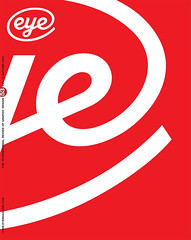Autumn 2004
The holiday of a lifetime
In 1936, Herbert Bayer was faced with a difficult brief: promoting the Third Reich
In 1936, Herbert Bayer designed a brochure for the Deutschland Ausstellung [Germany Exhibition]. It was published as an insert in the German graphic design magazine Gebrauchsgraphik. Aimed at tourists visiting Berlin for the Olympic Games in 1936, the exhibition celebrated life in the Third Reich. The brochure is rarely mentioned in books about Bayer and when he was asked about it in the 1980s, his reply concentrated on formal matters: ‘an interesting booklet insofar as it was done exclusively with photography and photomontage, and was printed in a duotone technique.’
Bayer, who emigrated to the United States in 1938, was by no means a ‘closet Nazi’, but it is interesting to see how one of the outstanding graphic designers of the twentieth century tackled such a difficult commission. The Berlin Olympics came weeks after Hitler had ordered German troops into the de-militarised zone of the Rhineland, the latest of a series of actions that had caused international anxiety about the Third Reich. How to counter critics and offer reassurances about German good will?
The brochure is a portrait of the Third Reich minus the warts. No mention of labour camps, harassment of minorities or the winding down of parliamentary democracy. However, a focus on its omissions fails to get to grips with its attempt to articulate a distinctive vision of Germany under Hitler. A useful comparison can be made with the eighteenth century, when the defence of Kultur against civilisation emerged in opposition to the perceived hegemonic pretensions of two world powers, Britain and France. For supporters of the Third Reich, the analogies were clear. By the start of the twentieth century, Germany was becoming an established power, rivalling Britain and France, but Germany’s rivals used the peace treaties of World War I to block its advance. Under Hitler, it was claimed, Germany finally stood up to the external forces that threatened its way of life.
Under National Socialism, the notion of Kultur embraced both national heritage and the social and the economic changes associated with modernisation. The resulting tension has been characterised as a struggle between ‘ultra Modernism’ and ‘ultra historicism’, resulting in ‘reactionary Modernism’. Architecture, where technocrats confronted traditionalists, provides an example. ‘Hitler,’ writes architectural historian Iain Boyd Whyte. ‘encouraged both but identified solely with neither.’
The Heinkel aeroplane factory in Oranienburg embodied these contradictions. It was designed by Herbert Rimpl, a former associate of Bauhaus founder Walter Gropius. The main factory had the functionalist trademarks of Weimar Modernist architecture, but the accompanying workers’ houses had rustic windows and pitched roofs. Within one project, Rimpl acknowledged the ‘technological utopia of the machine – of flight and fire power’ with the ‘redemptive utopia of the cottage and the family hearth.’ Architectural historian Winfried Nerdinger relates the style of a building to its function in the Third Reich. Prestigious public projects received a ‘Neoclassical’ treatment: housing, youth hostels and schools were designed according to what Nerdinger terms a ‘Blood and Soil Vernacular’; and a ‘Technoid-Functionalist’ style was reserved for utilitarian buildings (like the Heinkel factory). When Hitler first saw Werner March’s design for the Olympic Stadium, he dismissed it as ‘a glass box’, and Albert Speer intervened to change its design. The glazed partition walls were abandoned, the exposed steel frame was clad with stone and more cornices were added. March had forgotten to disguise his Modernism with ‘Neoclassical’ flourishes that would differentiate an Olympic Stadium from a factory.
To turn the pages of Bayer’s prospectus for the Deutschland Ausstellung is to embark on the graphic equivalent of an Autobahn journey, or of an architectural tour in the Third Reich. In the early sections, the reader encounters nature and rich cultural histories, including the ‘Neoclassical’ tradition, leading on to the ‘Technoid-Functionalist’ treatment of contemporary Berlin. The tendencies are harmoniously reconciled through the authority of Hitler, the brochure suggests.
Bayer appears to have been subsequently embarrassed about his professionalism in treating the National Socialist state as a client like any other. The brief was tough, but the end result fulfilled its demands. On paper at least, the design presented a murderous tyranny as a fascinating blend of old and new, the perfect destination for the holiday of a lifetime.
David Evans, teacher, writer, Bournemouth
Eye is the world’s most beautiful and collectable graphic design journal, published quarterly for professional designers, students and anyone interested in critical, informed writing about graphic design and visual culture. It is available from all good design bookshops and online at the Eye shop, where you can buy subscriptions and single issues.

